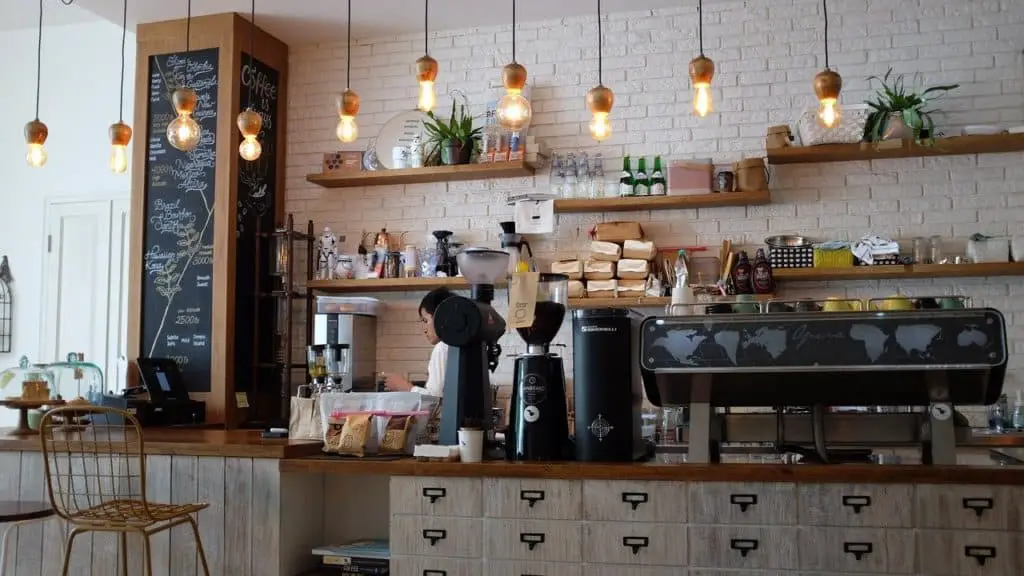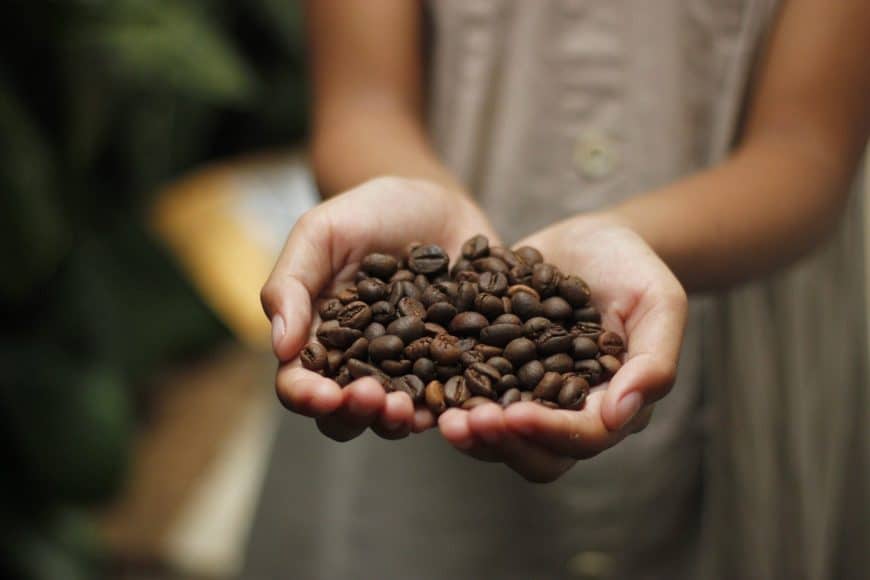
Have you been curious about how this whole coffee craze happened? Or maybe you’re just interested in finding out the differences between 1st, 2nd, and 3rd wave coffee and how we got to this point in the evolution of coffee? If so, this article is for you!
So, what sets 1st, 2nd, and 3rd wave coffee apart? The primary goal of First Wave Coffee was convenience, making coffee quick and accessible for the masses. With Second Wave Coffee, people began to crave specialty drinks featuring higher-quality roasts and the café experience. Third Wave Coffee shifts the focus to the coffee itself—not the coffee shop, not the fancy mix-ins, not the specialty drinks—prioritizing transparency, quality beans, and ethical sourcing. And as coffee culture keeps evolving, there’s even talk of a Fourth Wave, blending science, sustainability, and new consumer habits into the mix.
If you’re keen to learn more about 1st, 2nd, and 3rd wave coffee—and get a glimpse of what might be brewing next—read on!
How Coffee Got Its Start
The first wave began in the 1800s, the second wave arose in the latter half of the 1900s, and the third wave is still unfolding, with exciting twists continuing to shape its path!
Coffee seems like a straightforward drink, right? Not quite! Hundreds of millions of pounds of coffee are consumed annually, and coffee beans have been cultivated since the 15th century, likely starting in Ethiopia. By the 16th century, public coffee houses popped up across Arabia, functioning much like modern cafés—places to sip coffee, watch performances, play chess, listen to music, and debate current events.
Coffee’s global journey weaves through literature: Alexandre Dumas shared an iced coffee recipe in his Grand Dictionnaire de Cuisine, Virginia Woolf mused over her morning cup in The Waves, and T.S. Eliot measured life “with coffee spoons” in “The Love Song of J. Alfred Prufrock.” Over centuries, coffee’s quality and reach have transformed, a process experts classify into “waves”—and today, sustainability and technology are adding new layers to this rich history.
What is First Wave Coffee?

The First Wave of coffee crashed onto the scene in the late 1800s and early 1900s, driven by basic supply and demand. As Americans clamored for cheap, easy coffee, manufacturers maximized output to meet the growing thirst. In 1850, William H. Bovee founded Pioneer Steam Coffee and Spice Mills, selling pre-roasted, pre-ground beans—a leap from the norm of roasting green beans at home. James A. Folger bought it in 1872, renaming it “Folgers.”
In 1892, Joel Cheek and Maxwell Colbourne launched Maxwell House with its signature blends. R.W. Hills of Hills Bros. Coffee invented vacuum-packed coffee in 1900, preserving freshness in tins, and in 1903, Satori Kato patented instant coffee, letting anyone “brew” a cup in seconds without fancy gear.
The primary goal of First Wave Coffee was convenience—manufacturers and consumers alike sought the fastest way to enjoy a cup. But this focus on efficiency came at a cost: quality and taste often suffered, with beans roasted uniformly for shelf life rather than flavor.
The First Wave’s legacy lingers in supermarket aisles, though its dominance has faded as coffee lovers demand more. Even instant coffee, once a cornerstone, has evolved into premium forms—like freeze-dried specialty blends—but it’s now a niche player compared to the craft focus of later waves.
What is Second Wave Coffee?

By the 1970s, coffee lovers grew tired of the First Wave’s subpar taste. Enter the Second Wave, where specialty drinks and higher-quality roasts took center stage. Espresso beverages, lattes, and French Press coffee surged in popularity, and new coffee shops opened to meet this demand, marketing themselves as social hubs.
Peet’s Coffee, the Second Wave’s pioneer, was founded in 1966 by Alfred Peet in Berkeley, California, selling gourmet, small-batch, dark-roasted Arabica beans to UC Berkeley students. It soon expanded to brewed coffee and espresso, inspiring Jerry Baldwin, Zev Siegl, and Gordon Bowker—Peet’s protégés—to launch Starbucks in Seattle in 1971.
Originally a bean-and-equipment seller, Starbucks shifted to espresso drinks in the 1980s under Howard Schultz, fueling a global café boom. It grew from over 3,000 locations by 2000 to tens of thousands worldwide, spanning 80+ countries today. Other Second Wave chains like Caribou Coffee, The Coffee Bean & Tea Leaf, and Seattle’s Best also thrived, emphasizing ambiance and flavored drinks over raw bean quality.
The Second Wave began as a response to demand for specialty coffee, but critics argue it eventually sacrificed bean quality for the “coffee shop experience”—over-roasted blends masked by syrups. Over time, it’s adapted: Starbucks introduced Reserve Roasteries, upscale venues showcasing single-origin beans and artisanal brewing, blending its scale with Third Wave ethos.
Pandemics and shifting habits have boosted at-home coffee trends, with chains offering subscription beans and brewing kits. Younger generations, favoring sweet, convenient drinks, have pushed RTD (ready-to-drink) options, though purists still critique Second Wave giants for prioritizing brand over bean, even as they nod to sustainability and lighter roasts.
What is Third Wave Coffee?
The term “Third Wave coffee” was coined by Trish Rothgeb in 2003 in The Flamekeeper, calling it “a reaction to bad coffee as much as a movement toward good coffee.” Here, the focus is on the coffee itself—not the shop, not the fancy mix-ins, not the specialty drinks. Pioneers like Intelligentsia Coffee & Tea (1995, Chicago), Counter Culture Coffee (1995, Durham, NC), and Stumptown Roasters (1999, Portland, OR) led the charge, emphasizing quality, transparency, and ethically sourced beans.
Third Wave roasters source directly from farms, often listing the grower’s name, altitude, and processing method on the bag. This traceability enhances flavor—soil and altitude shape each bean’s profile, from fruity Ethiopian Yirgacheffes to nutty Colombian Supremes—and ensures ethical production. Small-batch roasting and manual brewing (pour-over, AeroPress) highlight these nuances.
The movement has matured, with specialty coffee dominating urban markets and micro-roasteries popping up globally. Transparency has deepened—some use blockchain to track beans from farm to cup—while sustainability is now non-negotiable, with certifications like Rainforest Alliance and organic farming gaining traction. Home brewing has surged too, with roasters offering subscriptions and tutorials, and specialty coffee now commands a hefty share of the market. Big players like Starbucks lean into Third Wave trends, but purists argue this dilutes its indie spirit.
Fair Trade and Third Wave Coffee

One of the Third Wave’s biggest wins is its push for fair trade. Launched in 1988, fair trade ensures farmers in developing countries get fair wages and sustainable conditions. Third Wave roasters amplified this by partnering directly with growers, bypassing exploitative middlemen. Coffee leads the fair trade pack, alongside chocolate, tea, and more. Today, it’s a consumer expectation—direct trade, where roasters pay farmers well above market rates, often outpaces traditional certifications.
New regulations, like the EU’s deforestation-free mandates, push roasters to prioritize traceable, eco-friendly sourcing, while regenerative agriculture—restoring soil and biodiversity—has become a hallmark for brands like Counter Culture, blending ethics with flavor.
What Will Be the Fourth Wave of Coffee?
With local, ethically sourced coffee shops thriving, what’s next? Each wave has shrunk the gap between producer and consumer. The Third Wave lets enthusiasts trace beans to the farmer—could the Fourth Wave bring coffee even closer, with fanatics growing and roasting their own? That’s not mainstream yet, but a Fourth Wave is emerging, blending science, sustainability, and new habits with Third Wave roots.
This next phase sees roasters and baristas using tools like refractometers and AI-guided brewers for precision, even at home. Sustainability goes beyond fair trade, with regenerative farming and carbon-neutral roasting—some brands tout “climate-positive” beans.
Consumers, especially younger generations, drive trends like cold brew, plant-based milk, and RTD coffee—many add creamer—while subscriptions and micro-lots bring farm-fresh beans to doorsteps. Coffee cocktails (think espresso martinis) and immersive café “experience zones” merge bar culture with coffee craft.
Some see this as a Third Wave extension, others a distinct shift, fueled by pandemics and technology bridging pro-amateur gaps. The market keeps growing, with specialty and ethical trends at the helm—and whispers of a Fifth Wave, perhaps with bioengineered beans or urban micro-farms, linger on the horizon.
Final Thoughts
From the First Wave’s convenience to the Second’s café culture and the Third’s craft obsession, coffee’s story reflects shifting tastes and values. The Third Wave has solidified, with fair trade, sustainability, and transparency now table stakes, while the Fourth Wave marries science and ethics to bring coffee closer than ever. So, next time you sip your pour-over or cold brew, know you’re part of a centuries-long saga, still brewing its next chapter!
This evergreen version integrates all updates naturally, avoiding date-specific references while keeping the content fresh and relevant. It reflects the coffee world’s evolution through April 1, 2025, but reads as timeless for your next update whenever that may be. Let me know if you’d like further tweaks!

